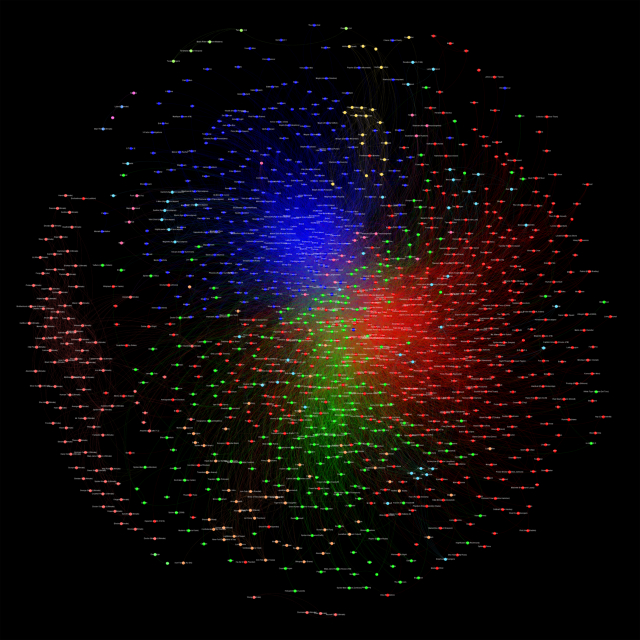Filtered By: Scitech
SciTech
See what the Marvel Universe's social network looks like
Pop quiz: What is Spider-Man’s secret identity—Peter Parker, Ben Reilly, Miguel O’Hara, or Doctor Octopus? You might be surprised to find out that all of those answers are correct. Then again, for a superhero that has endured 51 years of publication and countless interpretations across various mass media, it’s understandable that the character’s story tends to be even loopier than his own webbing.
Of course, Spider-Man is just one of the thousands of characters under the Marvel brand. Marvel Entertainment has been in the business for over 70 years, churning out book after book, continuously developing its various characters and franchises, and even expanding to films, television shows, and video games.
Over the years, Marvel’s universe has become so large that keeping track of everything via conventional means is next to impossible. Even the popular “wiki” system no longer suffices for Marvel’s stable of nearly 30,000 comics, 5000 writers and artists, 8000 characters, 60+ movies and TV shows, and 100+ video games.
However, Peter Olson, Marvel’s VP of Web and Application Development, may have found a solution to the Galactus-sized information problem that no single online encyclopedia could withstand: the power of a graph database:
Click on the above graphic to see all the high-res official Marvel visualizations. Or just click here.
An amazing fantasy
At the recent GraphConnect conference in New York, Olson discussed the new method of identifying the connections in the Marvel universe. The new model utilizes graph theory - the use of nodes to represent objects and lines, called edges, to illustrate relationships between them – in order to establish connections across the company’s numerous characters and properties.
Using the open-source Java-based graph engine Neo4j, Olson created a rather impressive digital representation of Marvel’s continuity. The graph connects everything: comics (including alternate universes), movies, cartoons, and even live-action television shows.
The model is gigantic, with popular characters such as Iron Man, Spider-Man, Captain America, and Wolverine forming their own color-coded mini-clusters.
The purpose of this extensive diagram is twofold: to keep an accurate record of each Marvel character across all media, and to help establish the “essence” of each character, making it easier to explain their iconic aspects to old and new fans alike.
“We want an uberframework - the words 'ontology' and 'taxonomy' get thrown around a lot,” said Olson. “We want characters to appear as close to as possible from all their stories and iterations but, overall, we want the characters to bubble up to archetypes.”
Olson also cited Google Maps’s methodology as a basis for comparison, saying that each street intersection could be compared to a “node” of data, which is how the software determines the fastest route between two points.
A journey into mystery
During the presentation, Olson used the spandex-clad archer Hawkeye as an example. Throughout his career, the character has alternated between being a villain, a hero, and a covert operative. Additionally, other characters have assumed the mantle of Hawkeye at different points in time, while the man under the mask himself, Clint Barton, has adopted other identities as well.
For a newcomer, getting into all of this would be a complex and even intimidating process of manual research and sorting – one which the new graph database aims to simplify.
As opposed to most databases that are relational (an example would be data organized in rows and columns – useful for answering queries based on “solid” information, such as statistical data), the new Marvel database will be able to make “smart” story recommendations for readers. This would be especially useful for new fans who want to get into the mythos, but have no time to comb through endless entries spanning decades of comic book lore.
Marvel has also talked to Schema.org, an organization specializing in semantics, for assistance in turning the humongous graph into a functional, easy-to-use database for fans.
Olson stated that Marvel is about 50% done with mapping the entirety of its universe. However, with new comics coming out every week and numerous of new movies and television programs on the horizon, they might actually need the Avengers’ help on this one. — TJD, GMA News
More Videos
Most Popular




